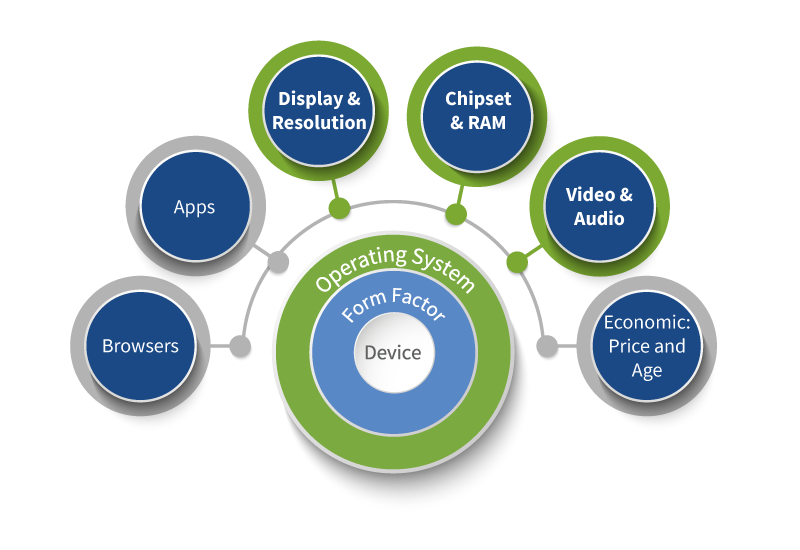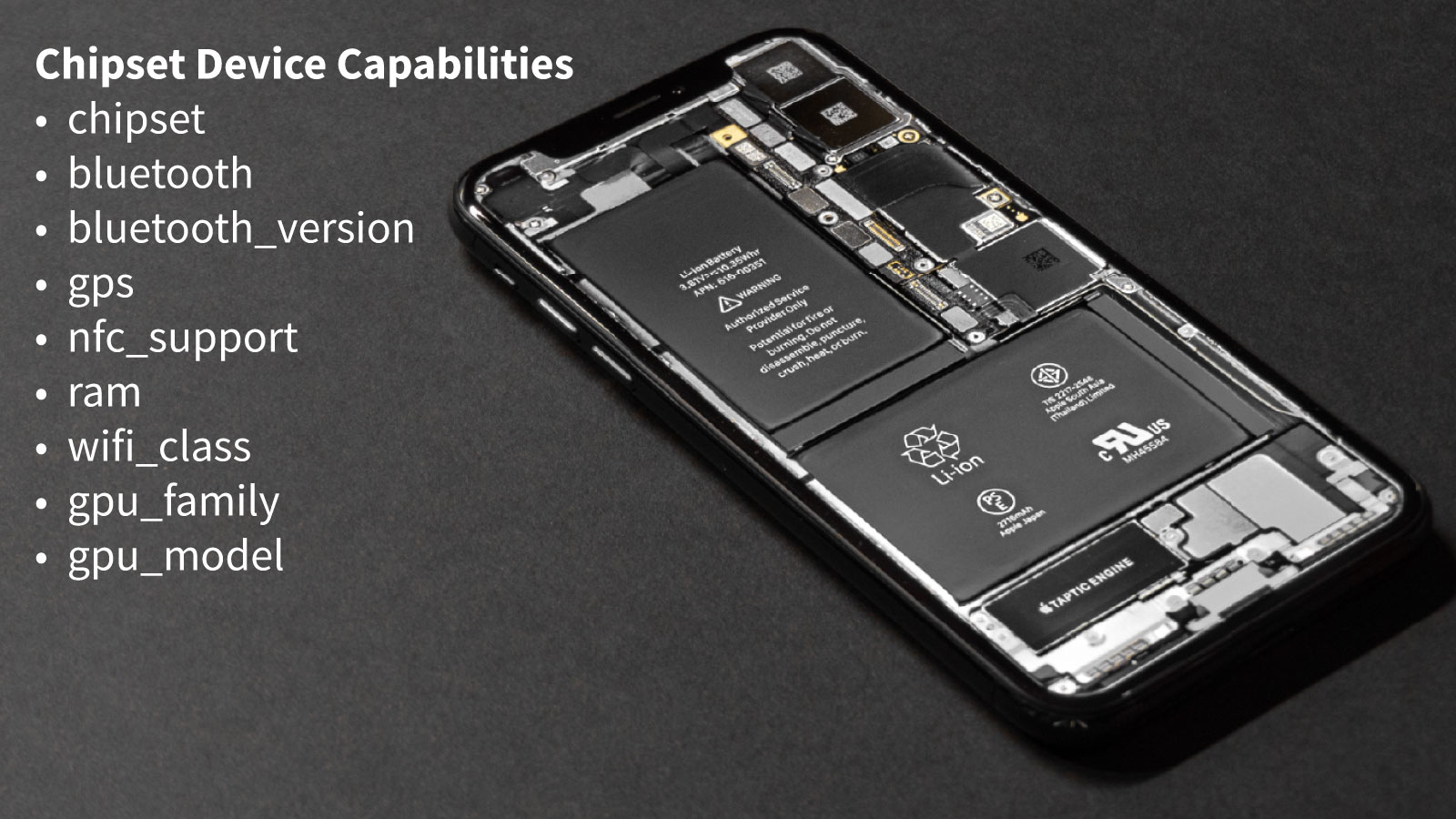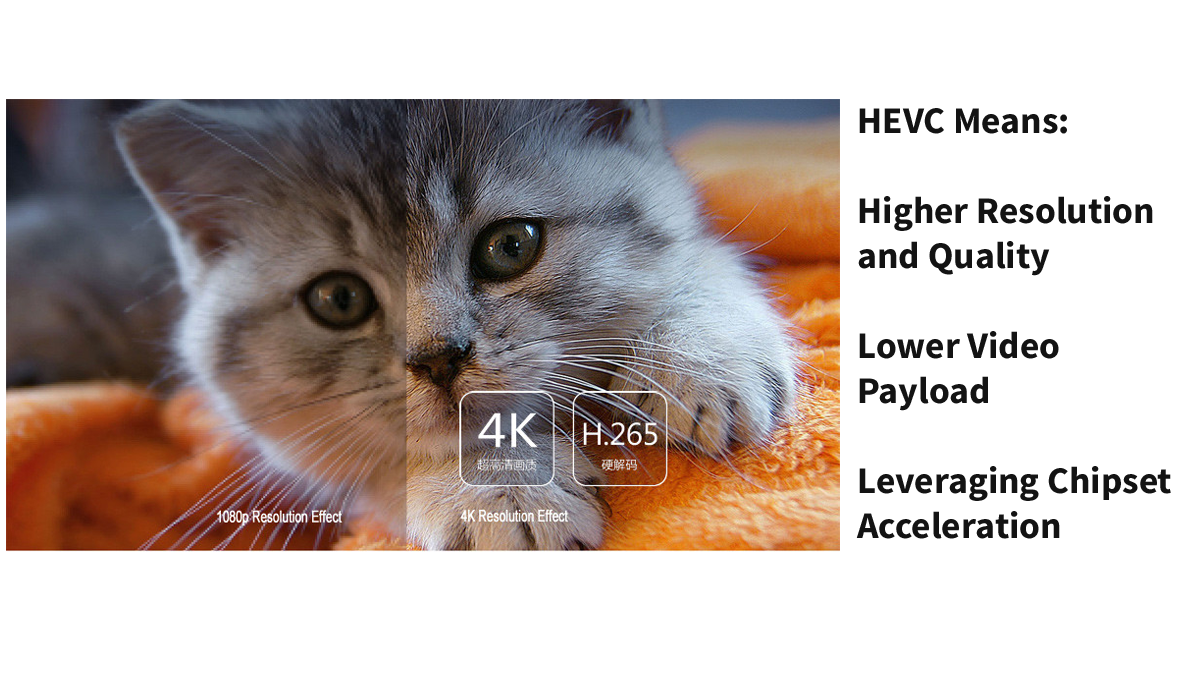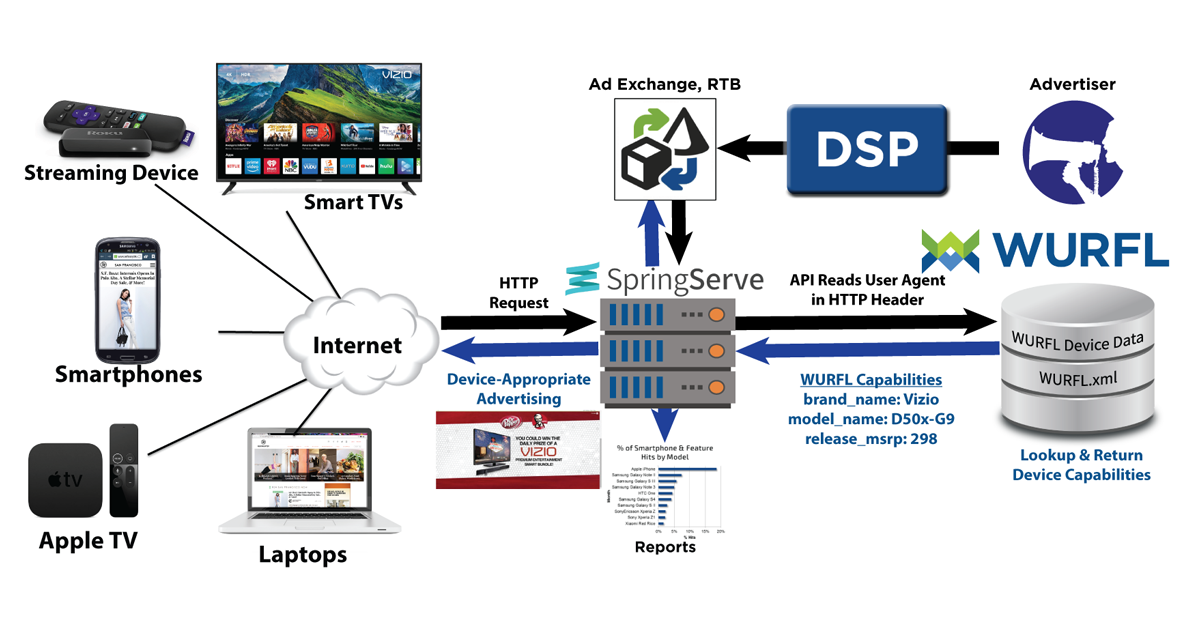
Growth of Streaming OTT Video
Linear TV is dying. Streaming video is now king. But the fragmented ecosystem of devices on which people watch streaming video poses problems for quality and the customer experience.
Streaming Video Quality and Analytics
The video player apps of today have the ability to negotiate an optimal video codec that will work to send the highest quality video to a device. Quality is usually perceived in terms of buffering, frame rate, and resolution.
A number of factors can cause poor quality across any of these metrics. Many of these problems can be caused by inadequate capabilities of the device.
For example, video playback may suffer from slow frame rate. The display, RAM, CPU, or GPU may not have the power to render the video quickly enough for the frame rate desired.
With a device detection solution capturing analytics about the device capabilities and poor quality, video platforms can both analyze and proactively solve these problems.
WURFL Device Capabilities for Video Analytics
Let’s look at a video streaming platform in Asia. Key programming includes soccer and cricket matches. In order to accurately show the action on the field, the video frame rate needs to stay as high as possible.

The Asian video service has integrated ScientiaMobile’s WURFL into their operations and analytics platform. As part of any enterprise device detection solution, they have the core device capabilities, including:
Device
- brand_name
- model_name
- marketing_name
Form_factor
- form_factor
- is_smartphone
- is_tablet
- is_mobile
- is_smarttv
Operating System
- device_os
- device_os_version
Display Device Capabilities
Drilling down on the device capabilities more relevant to the video experience, they capture and analyze display, chipset, and video codec capabilities.
For Display,these include:
CSS Logical Pixel Resolution
- max_image_height
- max_image_width
Physical Pixel Resolution
- resolution_height
- resolution_width
Density
- pixel_density
- density_class
Typically the pixel height or width does not cause problems in of itself. It implies a maximum frame size. But as the frame size and the Frames Per Second (FPS) of a video increases, the more computing power is needed. That leads to considering the device’s chipset capabilities.
Chipset Device Capabilities

How much computing power does a smartphone have? For a modern smartphone, the answer is “a lot”. That is why the smartphone is becoming the video playback device of choice for many people. But of course, not all smartphones are created equal. Many smartphones might not be up to the task of playing back 4K video (3840 × 2160 pixels) at 120 frames per second.
To improve video playback, in addition to a high resolution screen, manufacturers will build in a strong CPU chipset, supplemented by a Graphical Processor Unit (GPU), and add in sufficient memory (RAM).
- chipset
- bluetooth
- bluetooth_version
- gps
- nfc_support
- ram
- wifi_class
- gpu_family
- gpu_model
The video streaming platform frequently analyzes these chipset device capabilities and problems it is identifying to see if there is correlation. These chipset capabilities are very valuable for troubleshooting the likelihood of a problem with a specific device model.
Modem Device Capabilities
Another source of quality problems may be the smartphone might not have a modem capable of the high bandwidth required for streaming video. Just because the screen and processor are adequate does not necessarily mean the installed modem provides a large enough pipeline to deliver high-quality video.
WURFL can detect key modem capabilities such as:
- modem – returns the name of the device’s modem. E.g. “Snapdragon X60 5G”.
- modem_downlink_speed
- modem_uplink_speed
- is_5g – returns true if device supports 5G
- 5g – returns the highest mode of 5G operation that the device’s modem supports (e.g. Frequency Range 1 aka sub6 mode)
Video Codec Device Capabilities

The video codec that a streaming platform uses is typically negotiated at the outset of a session. Many newer, advanced codecs like HEVC (aka h265), are excellent for reducing the amount of data transmitted. The compression algorithms continue to improve. However, these video codecs put more pressure on the device to decode the video quickly and effectively and in a power-efficient manner that will not quickly deplete your battery and push your CPU into a meltdown.
WURFL has the ability to determine if a device possesses a GPU capable of encoding or decoding an advanced video codec like HEVC. For example, the below WURFL device capabilities:
Hardware-Accelerated Video
- hevc_hardware_encode
- hevc_hardware_decode
In the case of the decode capability (which is most relevant for video streaming), the value returned for is a “level” value. For instance, it may return that the smartphone is a Level 6 device, capable of using its GPU to decode and playback at a 3840×2160 resolution (aka 4K) at a maximum of 128fps. Knowing the level of HEVC support that a device has, from the initial request, can provide guidance to the video application on the device and help with troubleshooting later.
Device Capabilities and Video Advertising

In addition to operational quality issues, WURFL device capabilities are valuable in the ad insertion and bidding process. Increasingly, real-time bidding is used to offer advertising inventory in an exchange. WURFL works to help identify device characteristics during the bidding process.
You can learn the International Advertising Bureau’s (IAB) Open Real-Time Bidding (RTB) specification here.
IAB has developed the OpenRTB specification to support the data interchange required to support automated trading of digital ads, including video ad insertions. This API specification outlines industry standards for objects and parameters that are communicated between buyers of advertising and sellers of publisher inventory.
One critical object describes the type and capabilities of the device used to view the video. Many successful video ad serving platforms like SpringServe see success growth after deploying WURFL device detection. With the granular device information provided by WURFL, streaming video and OTT platforms can target ad inventory.
Summary
As video platforms proliferate, quality is sure to be a differentiating factor for them. Consumers will quickly abandon a service that frustrates them with a poor experience. Therefore, to grow and prosper, video platforms need to invest in device analytics solutions like WURFL that will easily integrate with both their operational analytics platforms and advertising platforms.








